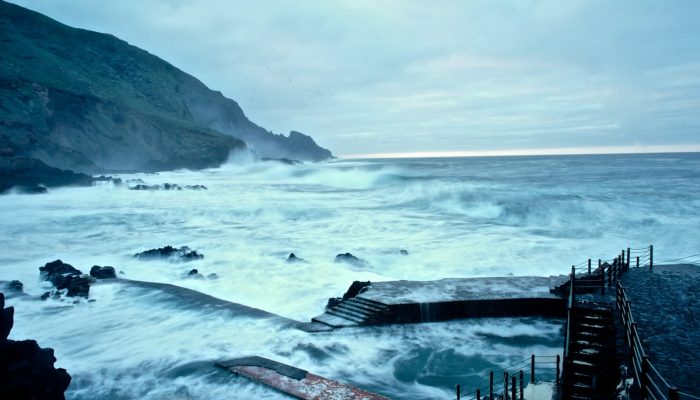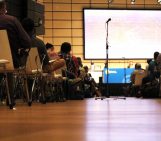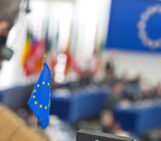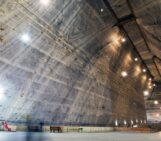
As scientists, it can sometimes be difficult to see the real-world implications of some of our research. Concepts can often seem abstract and remote when sitting in a lab or taking field measurements. But researching the Earth sciences can have profound effects on global society. Understanding how the natural world works can help protect and improve human, animal, and plant life. This month’s GeoPolicy post (part of the European Geosciences Union GeoLog Blog) highlights EU funded projects that have their foundations in the Earth sciences.
EU member states can apply for regional project funding that aims to improve living standards for the residents living within that region. Projects can be technology, medicine, environment, or social-science based. This post highlights 8 projects that have resulted from earth-science research. Scroll down to see what projects are going on in your country, or your area of science. A full list of EU funded projects can be found here and more information on the EU regional development fund can be found on their website.
Preventing coastal erosion in Southern France
Coastal erosion causes coastlines to collapse and retreat landward. This can have damaging effects on local residents, or on those who use the coast for recreational activities. In the Mediterranean, beaches are sustained by sediment supplied from river deltas. Erosion can occur when less river sediment is transported to the coasts. This can occur when there has been a decrease in the frequency of major floods, catchment reforestation, dam construction, or dredging activities1.
The EU funded a project to protect coastal regions in the South of France; an area popular for tourists and local residents alike. Amongst other initiatives, which included infrastructure changes, a dune ridge was re-established to protect the beach and coastal area.
http://ec.europa.eu/regional_policy/en/projects/france/preservation-of-coastal-gem
River adaptation to fight flash floods in Spain
The Simat region, located on the East coast of Spain, near Valenciana, is often subjected to flash flooding as it is situated between mountains and the Mediterranean Sea. Flash floods caused by heavy autumn rains burst river banks and have a devastating effect on the surrounding villages.
EU funding provided both ‘soft’ and ‘hard’ flood defences for the Valenciana region. Soft river defences use natural resources and local knowledge to protect residents from flooding. A region upstream of Simet was reclaimed for flood plains and the river was widened. To complement this, a canal system (an example of a hard defence strategy) was constructed further downstream.
http://ec.europa.eu/regional_policy/en/projects/spain/river-adaptation-to-fight-flash-floods
Energy Efficiency: Recovering heat to produce thermal energy in Greece
Increasing energy efficiency is a key objective for the European Union: there is a specific EU Directive that focuses entirely on improving energy usage. By 2020, the EU aims to have saved roughly the equivalent of 400 power stations-worth of energy2.
Florina, a city in mainland Greece, has been awarded EU funding for a project aimed to distribute unused heat energy from power stations to 23,000 local residents. Surplus heat will be piped as ‘superheated water’ to local homes and businesses. As well as improving energy efficiency, this project is expected to cut water-related greenhouse gas emissions by 88%, as hot water will no longer be heated by traditional oil and gas combustion methods.
http://ec.europa.eu/regional_policy/en/projects/greece/recovering-heat-to-produce-thermal-energy
Improving groundwater quality in Poland
Groundwater is a lifeline to supplying Europe with freshwater. Over 300 million EU citizens get their drinking water from these subsurface water deposits. Unfortunately, groundwater can become contaminated making it unfit to be consumed, and endanger aquatic and terrestrial ecosystems. This can happen when septic systems that are not connected to modern sewer systems leak bacteria, viruses, and chemicals into the environment.
An EU funded project for the Poznań region in Poland is protecting local groundwater supplies by improving wastewater treatment networks, which will benefit almost 736,000 local inhabitants. The construction of an integrated water and wastewater monitoring system helps to protect residents as well as the surrounding ecosystems.
http://ec.europa.eu/regional_policy/en/projects/poland/improving-groundwater-quality-around-poznan
Micro-hydropower plants in the UK and Ireland
The world needs to shift to non-carbon based energy generation to reduce greenhouse gas emissions. The EU aims to achieve 20% energy generation from renewable sources by 2020 (2012 levels stood at 11%)3. Renewable energy sources include hydropower, geothermal, wind energy, solar energy, and biomass. Hydropower is commonly generated through dam structures, where flowing water passes through a turbine. An alternative method is to take surplus electrical energy from the grid and use it to pump water to elevated ground, therefore storing it as potential energy to be used later.
A common method within water supply systems is to use pressurised pumps to transport water to the pipeline network. Excess pressure is often vented, releasing unused energy into the atmosphere. A recently funded EU project aims to create hydro-energy from these supply systems by installing micro-hydropower plants on the ventilation valves. The generated electricity can be used to reduce conventional energy consumption. The project has been funded for regions in Wales and Ireland, however it is thought this technology could be expanded across Europe and beyond.
Turning copper to gold: mining in Portugal
Raw materials, including minerals and rare-earth elements, are used in infrastructure, renewable energy resources, agriculture, and telecommunications. The vast majority of these resources are imported to the EU, and very few mineral mines are located within Europe. It is important to improve the security of supply by either increasing internal supply or reducing the need for these materials.
The Alentejo region in Portugal is located on the Iberian pyrite belt, a geological zone rich in mineral deposits. Mining has occurred for many centuries and the region currently employs over 500 people. Funds have been awarded to develop the mine’s capabilities to increase its output of copper ore, whilst continuing to meet EU environmental standards.
http://ec.europa.eu/regional_policy/en/projects/portugal/turning-copper-to-gold
Adapting water management to climate change in Denmark and Germany
Greenhouse gases absorb radiated energy from the Earth and re-radiate this as heat; raising global temperatures. This results in ice caps and glaciers melting and causes rising sea levels. Low-lying countries are now experiencing greater flooding episodes and increasing storm surges (another effect of manmade climate change). The Syddanmark region in Denmark and the Schleswig-Holstein region in Germany was awarded EU funding to assess and reduce the damage new flooding has on these areas. After discussions with professionals, politicians and members of the public, it was decided to develop a hydrological model to assess the future impacts flooding would have. The model was able to highlight where dikes should be relocated and retention areas be created to reduce negative flooding impacts. Additionally, the resulting changes showed positive biodiversity effects in these new areas from the temporary flooding.
Establishing a commercial spaceport in Sweden
Space research and exploration does more than simply try to answer overarching questions about life, the solar system, and beyond. The research and development driven by space science and exploration have led to inventions that are now used to help us in our daily lives. The ESA has a portfolio of ~450 inventions, covering areas such as optics, robotics, and electrical power. The development of the so-called “second space age” is seeing private space companies contributing to research and innovation, as well as providing opportunities for more commercial space flights.
The Kiruna region, in Northern Sweden, established an international space and research ground-station over 50 years ago. The station hosts rocket and balloon launches, satellite monitoring, new space and flight systems testing, and multiple ground-based space measurements. A project has been funded to transform the Kiruna centre into a ‘fully functioning spaceport’ to develop new products, services, research, and education.
http://ec.europa.eu/regional_policy/en/projects/best-practices/sweden/2105
More information about EU project funding and where it is allocated can be found on the European Commission website.
—
Sources:
1 – http://www.climatechangepost.com/france/coastal-erosion/
2 – https://ec.europa.eu/energy/en/topics/energy-efficiency
3 – http://www.eea.europa.eu/soer-2015/europe/energy





Pingback: GeoPolicy: 8 science-based projects improving regions in the EU | Europe in My Region